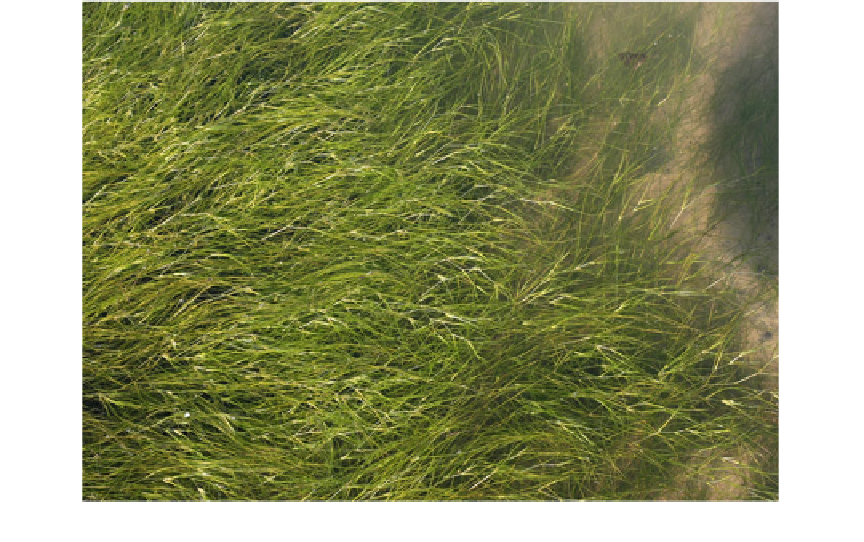Environmental Engineering Reference
In-Depth Information
Fig. 2.16
Salt marsh grass bed exposed to tidal surges
nds its origin from the
Portuguese and English Words
The word
'
mangrove
'
families, and the complete community or asso-
ciation of plants which fringe sheltered tropical
shores. About 60
'
Mangue
'
and
'
'
, respectively, and indicates mangroves
plants as well as a group of trees. According to
Mepham and Mepham (
1984
), the term has been
inconsistent and confusing in the past. Man-
groves are basically evergreen sclerophyllous,
broad-leaved trees with aerial root such as
pneumatophore or stilt root and viviparously
germinated seedlings (UNESCO
1973
). They
grow along protected sedimentary shores espe-
cially in tidal lagoons, embayment and estuaries
(Macnae
1968
). They also can grow far inland,
but never isolated from the sea. These emergent,
evergreen canopies are found along the sedi-
mentary shores of both tropical and subtropical
regions in association with intertidal
Grove
75 % of tropical coastline is
fringed with mangroves (Reimold and Queen
1974
). Duke (
1992
)de
-
A
tree, shrub, palm and ground fern, generally
exceeding one half metre in height and which
normally grows above mean sea level in the
intertidal zone of marine coastal environments or
estuarine margins
ned mangroves as
'…
nition is accept-
able except that ground ferns should be consid-
ered as mangrove associates rather than true
mangroves. The term
…'
. This de
often refers to
both the plants and the forest community. To
avoid confusion, Macnae (
1968
) stated that
'
'
mangrove
'
should refer to halophytic plant
species, while the entire forest community
including micro- and macro-organisms should be
considered as
mangrove
'
ora and
fauna commonly known as mangrove ecosystem,
and the community of these mangroves was
coined by Macnae (
1968
)as
Mangal
. Lear and
Turner (
1977
) expressed the word
fl
. The mangal is therefore
a broad domain encompassing the entire biotic
community comprising of individual plant spe-
cies, associated microbes (such as bacteria and
fungi) and animals. The mangal and its associ-
ated abiotic factors constitute an ideal mangrove
ecosystem, which is a unique ecosystem of the
planet Earth.
'
mangal
'
of
coastal ecosystem in a holistic manner, including
its common habitat or inhabiting fauna. The term
'
'
mangrove
'
mangrove
'
also denotes both the ecological
group of
owering halophytic shrubs and trees of
up to 30 m high belonging to several unrelated
fl

